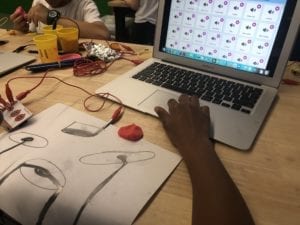
The First Industrial Revolution saw the dawn of water and steam power to mechanize production. The Second Revolution occurred when electricity was discovered which subsequently transformed industry. The Third is characterized by the emergence of information technologies which radically altered systems across the globe. Now, according to Klaus Schwab, the founder of the World Economic Forum, societies are on the verge of the Fourth Industrial Revolution. He argues that the exponential rate in which innovations are affecting our world is fundamentally different from the previous industrial revolutions. If a quick catalogue of these emerging technologies leaves you scratching your head, then you may be wondering how our children are going to adapt to a world defined by “artificial intelligence, robotics, the Internet of Things, autonomous vehicles, 3-D printing, nanotechnology, biotechnology, materials science, energy storage, and quantum computing,” (2016). Sadly, our educational institutions and pedagogical practices tend to be locked in the past, preparing students for an industrialized future, which we know has been evaporating for decades. So the larger question becomes, how do schools prepare a student for an increasingly unknown and unpredictable future?
Thankfully, Québec’s education system is on it. Back in 2018, the government introduced Québec’s Digital Strategy that would address the next industrial revolution. At its heart, it seeks the “effective integration and optimal use of digital technologies to foster the success of all Quebecers in order to promote lifelong skills development and maintenance” (Digital Action Plan (DAP), 2018). Furthermore, “it is education and higher education that will enable us to adapt, both now and in the future, and allow all members of society to have equal opportunity, educational success and the possibility of achieving their full potential” (DAP, 2018).
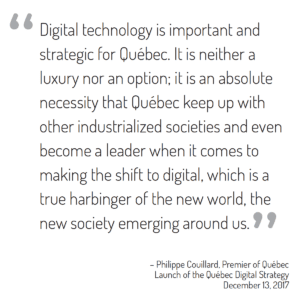
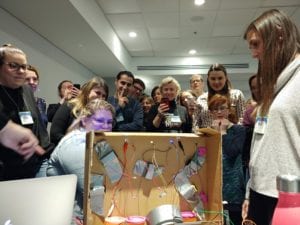 Thus, our educational institutions must become “laboratories of social innovation… at the heart of the digital revolution.” Our schools and centres “must be proactive rather than reactive when it comes to the digital revolution.” To this end, our educators and students “must be sufficiently agile to ensure that society as a whole can benefit from these transformations,” (DAP, p. 69). Without a fundamental transformation in how we teach and what we teach, our society will get left behind during this Fourth Revolution.
Thus, our educational institutions must become “laboratories of social innovation… at the heart of the digital revolution.” Our schools and centres “must be proactive rather than reactive when it comes to the digital revolution.” To this end, our educators and students “must be sufficiently agile to ensure that society as a whole can benefit from these transformations,” (DAP, p. 69). Without a fundamental transformation in how we teach and what we teach, our society will get left behind during this Fourth Revolution.
One of the largest orientations for preparing our educators and students is to “support the development of the digital skills of young people and adults,” with a $191 million dollar investment to ready ourselves. To this end, the government has invested and continues to invest in two areas supporting our preparedness: cutting-edge technological equipment and training of the school staff. In this post, we will focus on the technological equipment, while keeping in mind that tools are just that – tools. It is what you do with the tools that has the potential to be transformational. This is where our shifting mindset must come into play and timely professional development must lead the change. Good pedagogy is at the heart of this transformation.
LEARN, our RÉCIT partners, along with local pedagogical consultants and educators from the anglophone sector, have recently completed a series of videos to inform our educational system on this transformation. The focus of these videos is on the three combos: digital devices, creative spaces, and robotics that are a part of the implementation of the Digital Action Plan in our schools. Our objective in this series is to highlight how professional development along with a shifting mindset must inform our pedagogical practices. Remember: it is never about the tool, it is about what you do with the tool.
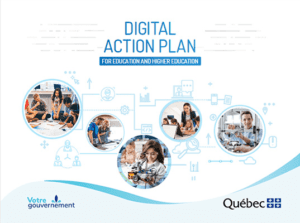
Video Series on the Digital Technology Combos
In the first video, educators introduce the maker mindset behind the Digital Technology Combos.
Introduction to Digital Devices
Introduction to Robotics
Introduction to Creative Spaces
As you can see from the video series, much thought, input, investment, and time has been put into enabling systemic change to happen within our schools and educational communities. It really comes down to educators implementing a pedagogy that supports, as Schwab concludes, our educators’ need to value “creativity, empathy, stewardship… to lift humanity into a new collective and moral consciousness based on a shared sense of destiny” (2016). Without this collective consciousness that shifts away from what to learn (content), towards how to learn (skills), our students will surely find the future difficult to navigate. Ready or not, here we go. Our students are worth it.
***************
Gouvernement du Québec Ministère de l’Éducation, D. (2018, September). Digital Action Plan for Education and Higher Education. Retrieved January 24, 2020, from http://www.education.gouv.qc.ca/en/current-initiatives/digital-action-plan/digital-action-plan/
Schwab, K. (2016, January 14). The Fourth Industrial Revolution: what it means and how to respond. Retrieved January 24, 2020, from https://www.weforum.org/agenda/2016/01/the-fourth-industrial-revolution-what-it-means-and-how-to-respond/

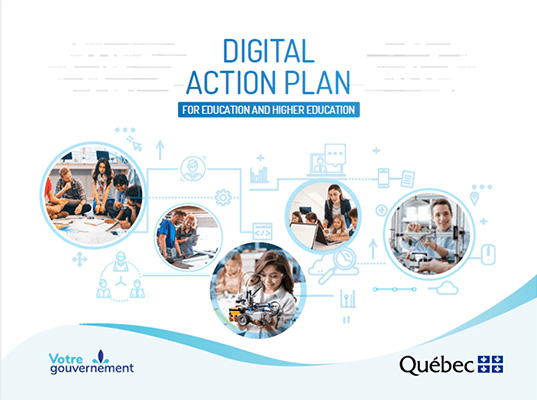



Excellent article Chris, it highlights the fundamental need for our education system to start moving forward from the past and to begin to implement new ideas that will be focused on in the future. I think that we need to look at robotics, creative spaces and all other aspects as an essential subject that our students will need when they become adults. As terrifying as it may be heading into a “fourth industrial revolution”, it will be exciting to see where the future takes our students as they progress through the education system with the digital action plan.
Cheers
Change is a good thing, as long as we are ready for it.